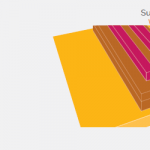First Sighting of Mysterious Majorana Fermion Could Lead to a New Family of Robust Qubits for Quantum Computing.

(MIT.TechReview) Physicists at MIT and elsewhere have observed evidence of Majorana fermions — particles that are theorized to also be their own antiparticle — on the surface of a common metal: gold. The results are a major step toward isolating the particles as stable, error-proof qubits for quantum computing.
Fermions are a class of elementary particles that includes electrons, protons, neutrons, and quarks, all of which make up the building blocks of matter. In 1937, the Italian theoretical physicist Ettore Majorana extended Dirac’s theory, predicting that among fermions, There should be some particles, since named Majorana fermions, that are indistinguishable from their antiparticles. (Mysteriously, the physicist disappeared during a ferry trip off the Italian coast just a year after making his prediction.)
The MIT-led team has observed evidence of Majorana fermions in a material system they designed and fabricated, which consists of nanowires of gold grown atop a superconducting material, vanadium, and dotted with small, ferromagnetic “islands” of europium sulfide. When the researchers scanned the surface near the islands, they saw signature signal spikes near zero energy on the very top surface of gold that, according to theory, should only be generated by pairs of Majorana fermions.
“The next push will be to take these objects and make them into qubits, which would be huge progress toward practical quantum computing,” adds co-author Patrick Lee, the William and Emma Rogers Professor of Physics at MIT.





















